Photo by Gems/Redferns
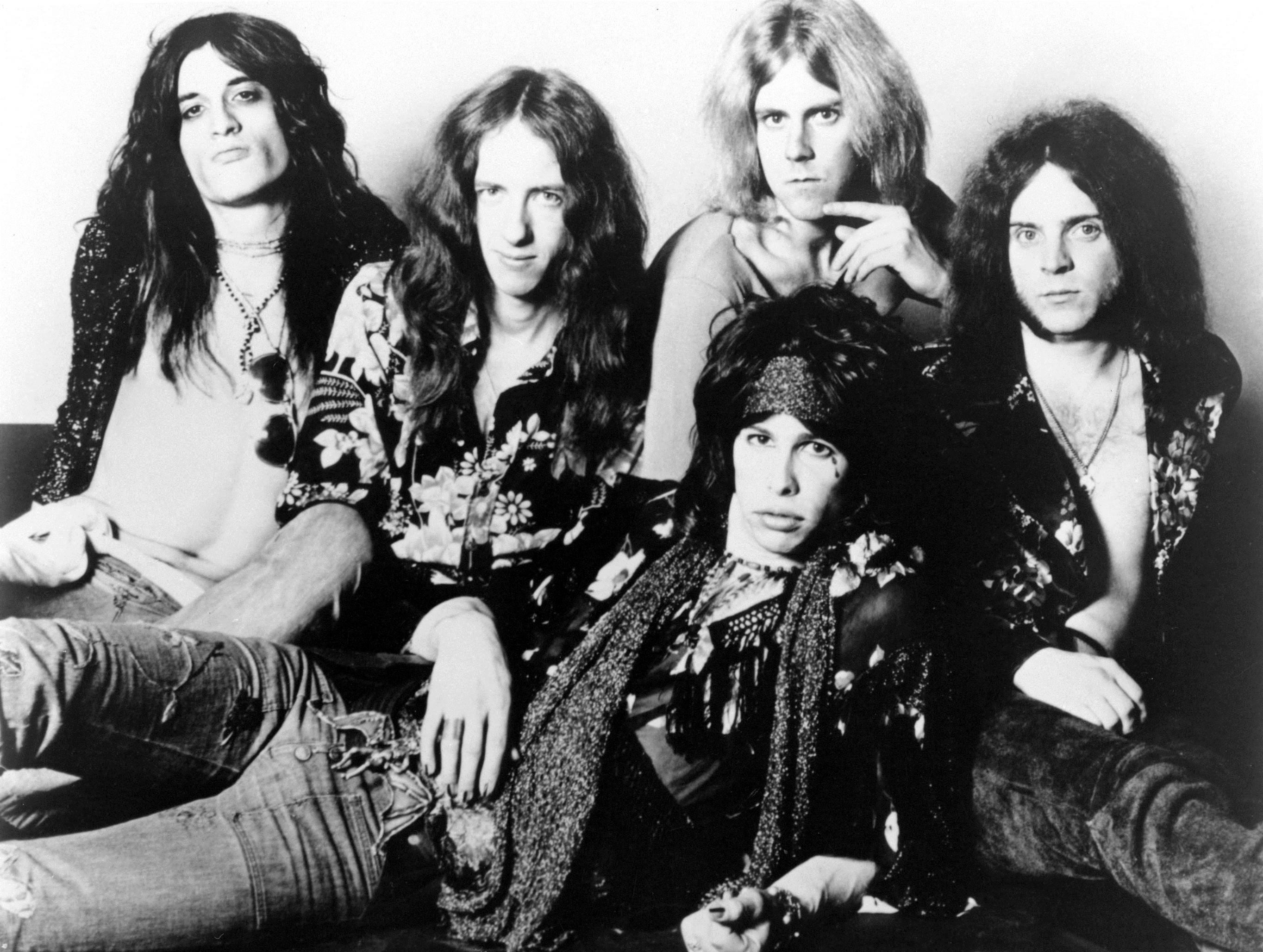
Aerosmith
news
Sing For The Years: A Look Back At Aerosmith's Decades-Long Rock Legacy
In celebration of Aerosmith's MusiCares Person Of The Year recognition and Sunday night's 2020 GRAMMY performance, here's a look back at the classic-rock favorites' career highlights
2020 MusiCares Person Of The Year Aerosmith are the best-selling American rock band in history, with reported sales of 150 million records worldwide. But you don't garner 12 multi-platinum albums (not to mention 18 platinum and 25 gold) on stellar songs and performances alone: Formed in Boston in 1970, Aerosmith also lay claim to an enviable, coveted cool. With equal doses of bravado, talent, sensitivity (those power ballads!), danger (The Toxic Twins!), charisma and chemistry (the good kind!), Aerosmith earned their musical bonafides the hard way.
An amazing half-century later, irrepressible frontman Steven Tyler and guitar king of cool Joe Perry, along with multi-talented axeman Brad Whitford and the rock-solid rhythm section of bassist Tom Hamilton and drummer Joey Kramer remain a band for the ages. Thanks to songs from all stages of their career, from the rock 'n' roll poetry of "Dream On" to the lustful "Love In An Elevator" to the GRAMMY-winning cry for social justice "Janie's Got a Gun," Aerosmith songs provide the soundtrack to the lives of millions of fans.
As with any successful band, Aerosmith endured low points, ones that the members don’t shy away from in their autobiographies or in the press. They’ve lived and definitely learned. But on the occasion of their MusiCares Person Of The Year recognition and Sunday night's 2020 GRAMMY performance, it's Aerosmith's ever-increasing and numerous highlights that are in the spotlight. Here are 10 of many:
"Clive Davis said he’s surely gonna make us a star…"
On August 5, 1972, five Boston lads known as Aerosmith land a $125,000 deal with Columbia, thanks to a show at New York's Max's Kansas City with Clive Davis in attendance. The band chronicled that legendary beginning in 1979's "No Surprize" with the lyrics "Nineteen seventy-one, we all heard the starter’s gun / New York was such a pity but at Max’s Kansas City we won / We all shot the shit at the bar / With Johnny O’Toole and his scar /And then old Clive Davis said he’s surely gonna make us a star…" In 1973, Aerosmith’s self-titled debut featured "Dream On"—which became a mega-hit in when re-released in 1975—as well as the often-played "Mama Kin," covered by Guns N' Roses, who cite Aerosmith as a major influence.
<style>.embed-container { position: relative; padding-bottom: 56.25%; height: 0; overflow: hidden; max-width: 100%; } .embed-container iframe, .embed-container object, .embed-container embed { position: absolute; top: 0; left: 0; width: 100%; height: 100%; }</style><div class='embed-container'><iframe src='https://www.youtube.com/embed/3-2u2lhGO4w' frameborder='0' allowfullscreen></iframe></div>
"Walk This Way"
It's not every day that a song marks a sea change, affecting popular culture. But in 1986, when the bluesy hard rockers teamed up with an influential NYC hip-hop trio, that’s just what happened. 11 years after "Walk This Way's" original inception, Aerosmith's collab with Run-DMC literally invented rap-rock, a seemingly unlikely crossover produced by Russell Simmons and Rick Rubin. The hugely popular video pitted Run-DMC and Aerosmith in a rap v. rock battle that ends in a joint performance of the song, with Steven Tyler literally breaking through the wall that separates the groups. "Walk This Way" was the first hip-hop hybrid video ever played in heavy rotation on MTV, and this version of the tune won both lineups a Soul Train Music Award for Best Rap - Single in 1987.
<style>.embed-container { position: relative; padding-bottom: 56.25%; height: 0; overflow: hidden; max-width: 100%; } .embed-container iframe, .embed-container object, .embed-container embed { position: absolute; top: 0; left: 0; width: 100%; height: 100%; }</style><div class='embed-container'><iframe src='https://www.youtube.com/embed/4B_UYYPb-Gk' frameborder='0' allowfullscreen></iframe></div>
Permanent Vacation
After Tyler's 1986 stint in rehab (with the rest of the band seeking sobriety at various points subsequent), "Walk This Way" helped kickstart a string of multi-platinum albums and Top 40 hits, starting with Permanent Vacation and single "Dude (Looks Like a Lady)" in 1987. Permanent Vacation was the band's bestselling album in over a decade (selling five million copies in the U.S.) with "Dude," "Angel" and "Rag Doll" reaching the Top 20 of the Billboard Hot 100. Tyler reveals in his autobiography that the album was "...the first one we ever did sober,” while drummer Kramer told the press, "There is a belief among musicians that if they don’t have their drugs and alcohol then they will lose their fire. We completely disproved that assumption."
<style>.embed-container { position: relative; padding-bottom: 56.25%; height: 0; overflow: hidden; max-width: 100%; } .embed-container iframe, .embed-container object, .embed-container embed { position: absolute; top: 0; left: 0; width: 100%; height: 100%; }</style><div class='embed-container'><iframe src='https://www.youtube.com/embed/nf0oXY4nDxE' frameborder='0' allowfullscreen></iframe></div>
"Crazy"
In 1990, Aerosmith won their first GRAMMY award, for Best Rock Performance By A Duo Or Group With Vocal, and eventually earned a total of four GRAMMYs for "Janie's Got a Gun," "Livin' on the Edge," "Crazy” and "Pink.” The video for "Crazy" was likewise historical. The hugely popular 1993 clip, akin to a short film, featured actress Alicia Silverstone and Tyler’s then-teenaged daughter Liv Tyler. To date, Aerosmith earned 14 nominations, and made their GRAMMY performance debut at the 33rd Awards in 1991 performing their version of the Beatles’ "Come Together."
<style>.embed-container { position: relative; padding-bottom: 56.25%; height: 0; overflow: hidden; max-width: 100%; } .embed-container iframe, .embed-container object, .embed-container embed { position: absolute; top: 0; left: 0; width: 100%; height: 100%; }</style><div class='embed-container'><iframe src='https://www.youtube.com/embed/NMNgbISmF4I' frameborder='0' allowfullscreen></iframe></div>
"I Don't Want To Miss A Thing"
A highlight of 1998 was Aerosmith’s first number one Billboard single to date, the resonant "I Don't Want To Miss A Thing." The song, recorded specifically for the blockbuster film Armageddon, remained at #1 for four weeks. It was also a family affair, as Liv Tyler co-starred in the film, which used several Aerosmith songs. "I Don’t Want to Miss a Thing" was nominated for an Academy Award for Best Original song, while the video was named MTV’s second most popular video of the year, nabbing the network’s “Best Video From A Movie” award.
<style>.embed-container { position: relative; padding-bottom: 56.25%; height: 0; overflow: hidden; max-width: 100%; } .embed-container iframe, .embed-container object, .embed-container embed { position: absolute; top: 0; left: 0; width: 100%; height: 100%; }</style><div class='embed-container'><iframe src='https://www.youtube.com/embed/JkK8g6FMEXE' frameborder='0' allowfullscreen></iframe></div>
"Never Forget That The 2001 Super Bowl Halftime Show Was The Most Iconic Moment of All Time"
Rock ruled at Super Bowl XXXV’s halftime show in 2001 thanks to Aerosmith, who were joined onstage for a rousing version of "Walk This Way" by pop royalty. *NSYNC, Britney Spears, Mary J. Blige and Nelly teamed with the Boston boys for the crowd-rallying hit. Also performed were "Jaded" and "I Don't Want to Miss a Thing," Many cited the halftime show as better than the game itself, Jenna Mullins of E! News opining: "Never Forget That The 2001 Super Bowl Halftime Show Was The Most Iconic Moment of All Time."
<style>.embed-container { position: relative; padding-bottom: 56.25%; height: 0; overflow: hidden; max-width: 100%; } .embed-container iframe, .embed-container object, .embed-container embed { position: absolute; top: 0; left: 0; width: 100%; height: 100%; }</style><div class='embed-container'><iframe src='https://www.youtube.com/embed/XXiUlnRJqps' frameborder='0' allowfullscreen></iframe></div>
"Hey, aren't you Mick Jagger?"
In 2001, the scrappy hitmakers were honored by their peers and inducted into the Rock and Roll Hall of Fame at the 2001’s 16th annual event in New York. Kid Rock, who performed with the Boston boys on "Sweet Emotion," inducted Aerosmith. In his thank-yous, Tyler namechecked influences and peers including the Kinks, the Stones and Nat King Cole, only partially joking when he quipped, "I wonder if this'll put an end to 'Hey, aren't you Mick Jagger?'"
Guitar Hero
Joe Perry may be a guitar hero, but the capital G "Guitar Hero" marked another feather in the band’s collective cap: Released in June 2008, it was the first game dedicated to one band. In addition to 25 Aerosmith songs, four cuts from Perry’s 2005 self-titled solo album were featured, plus contributions from collaborators and influences including Run-D.M.C. and the Kinks. A review in IGN called the challenging solos in "Train Kept A Rolling," "Mama Kin," and "Love In An Elevator" “a blast …From the first gig the band played at Nipmuc High to the Super Bowl halftime show and on to the Hall of Fame, the game traces the history of the band."
<style>.embed-container { position: relative; padding-bottom: 56.25%; height: 0; overflow: hidden; max-width: 100%; } .embed-container iframe, .embed-container object, .embed-container embed { position: absolute; top: 0; left: 0; width: 100%; height: 100%; }</style><div class='embed-container'><iframe src='https://www.youtube.com/embed/fCR2uscEsdI' frameborder='0' allowfullscreen></iframe></div>
Viva Las Vegas
Aerosmith’s success in their Sin City residency was no gamble. The year 2019 saw the debut of Deuces Are Wild at the Park MGM, a residency that carried into 2020. "Deuces" not only features Aerosmith in concert but offers up immersive, state-of-the-art audio and video along with never-seen-before visuals and audio from recording sessions. One review (The Wrap) raved about the band’s energy half a century into their career: "..the band sets extremely unrealistic expectations for anyone else in AARP," and praised "Dream On" or "Walk This Way" as "ecstatically good."
MusiCares Person Of The Year
With their 2020 MusiCares Person Of The Year recognition, Aerosmith adds an accolade to an already much-lauded career. Person Of The Year, an honor bestowed by The Recording Academy's charity arm, commends musicians for their artistic achievement in the music industry and dedication to philanthropy. Tyler performed at a MusiCares MAP Fund benefit concert in 2008, and in 2009 auctioned clothing and memorabilia to benefit the fund. Tyler’s own Janie's Fund charity, founded in 2015, brings awareness to the issue of abuse and neglect of children and generates financial support for effective services to help them overcome the trauma and pain of abuse. In its inaugural gala, Janie's Fund raised $2.4 million to aid victims.

Photo: Getty Images/John Atashian
feature
On This Day In Music: Woodstock '94 Begins In Upstate New York
Held 30 years ago Aug. 12-14, Woodstock '94 featured an eclectic (and muddy) lineup that launched Nine Inch Nails, Green Day and others into the limelight.
Woodstock '94 is no middle child music festival. While not as groundbreaking as Woodstock '69 or as infamous as Woodstock '99, Woodstock '94 boasts a unique legacy that deserves recognition.
Held Aug. 12-14 in the Hudson Valley town of Saugerties, New York, Woodstock '94 was set to commemorate the silver anniversary of the original Woodstock festival in 1969. Nodding to its origins in '69, Woodstock '94 was billed as "2 More Days of Peace and Music" (a third day of the festival was eventually added).
Woodstock '94 featured a wide range of acts that both reflected the nostalgia of Woodstock '69 and highlighted a myriad of new groups. Original Woodstock performers such as Crosby, Stills & Nash (minus Neil Young) and Santana topped the bill, and now-household names including Green Day and Red Hot Chili Peppers performed some of their earliest festival sets.
Even Bob Dylan, who initially declined an appearance at Woodstock '69 despite living near the festival at the time, had a change of heart and agreed to play at Woodstock '94.
It seemed that everyone wanted to capture a sliver of the magic from the original Woodstock. Although roughly 164,000 tickets were sold, the actual number of attendees exceeded 350,000 (surpassing even Coachella 2024's attendance rates).
Spirits were high as the festival opened on Friday with dry, sunny skies highlighting performances from Sheryl Crow, Collective Soul, and others. By the weekend, the weather took a turn and transformed the festival grounds at Winston Farm in Saugerties into a giant muddy puddle. Although Woodstock '69 was also rainy and mud-filled, the madness that ensued at Woodstock '94 led it to be dubbed "Mudstock."
As Primus performed "My Name Is Mud" on Saturday, festival-goers seized the opportunity to fling the wet dirt at the band on stage.
"Once I started singing the words to "My Name Is Mud," all of a sudden huge chunks of sod started flying my way and it was pretty frightening," Primus' lead singer told Billboard 20 years later. "I still have those [speaker] cabinets to this day, and those cabinets still have mud in them."
With high energy from Friday's acts and some mud-induced chaos, attendees were buzzing with anticipation and excitement for the rest of the weekend. The party atmosphere continued throughout day two — and not solely because Blind Melon lead vocalist Shannon Hoon strolled on stage tripping on acid, wearing his girlfriend's dress.
Aerosmith may have been day two headliners, but Nine Inch Nails' 15-song set remains a highlight of Woodstock '94. The band drew the biggest crowd of the festival, and were catapulted into wider mainstream visibility. Taking advantage of the unpredictable weather, then-bassist Danny Lohner pushed lead vocalist Trent Reznor into the mud, prompting Reznor to retaliate. The other members of the band soon joined in on the fun, strutting onto the stage covered in mud.
Opening with Pretty Hate Machine's "Terrible Lie," NIN turned the massive audience into a giant mosh pit and maintained that high energy until the end of the set. While the band faced technological difficulties onstage, it only seemed to enhance their raw, gritty image.
The set was so celebrated that it is forever memorialized in the Rock & Roll Hall of Fame, with art installations featuring a life-sized mannequin replica of Reznor singing into the microphone and his keyboard, both covered in mud.
By day three, Woodstock '94 was clearly becoming an iconic music festival that would be discussed for years to come. If Saturday's mud-slinging electric performances weren't enough, the final day of the festival featured performances from Green Day, Red Hot Chili Peppers, Bob Dylan, Santana, and others.
When Green Day — fresh off the success of their third studio album Dookie — took the stage, all hell broke loose. While the band was and continues to be known for their rowdy live sets, their performance at Woodstock '94 remains unmatched.
By the time Green Day started performing, the fairgrounds had turned into a full-blown mud fight. The band tried to push through the performance and embrace the chaos, but the set came to an abrupt stop when lead singer Billie Joe Armstrong told the crowd, "Everybody say shut the f— up and we’ll stop playing." When the crowd shouted the phrase back, Armstrong said goodbye on behalf of the band, and the rest of the group fled the stage.
By the end of the performance, lead singer Billie Joe Armstrong had lost his pants and the band had to be escorted out of the festival grounds by a helicopter. On their way off the stage, security confused mud-covered bassist Mike Dirnt for a crazed fan and tackled him, leaving him with five fewer teeth than he started the set with.
"He actually sheared my teeth, and I blew like five teeth. Only one of them died. I fixed the rest of them, but he all sheared up the back of my teeth," Dirnt confessed to The Aquarian in 2013. "It was horrible. But the great thing about it is that I was able to get out of there, and I'd do it again tomorrow if I had to."
Peter Gabriel closed out the weekend by remaining true to the original mission of the festival, offering fans peace filled with good vibes. Gabriel's music, though deeply contrasting with the hard rock and punk acts that dominated the festival, provided a flawless end to the chaos that had unfolded over the past three days.
While the 1994 installment of Woodstock hasn't basked in the same spotlight as its 1969 and 1999 siblings — the latter of which has been the subject of two documentaries in as many years — it remains far from forgotten.
Woodstock '94 stands as one of the legendary music festivals of all time. Although the rain may have soaked the grounds, turning it into a muddy catastrophe, it also nourished the roots of some of the most iconic musical acts and sent them into the mainstream media. The festival was more than just a series of performances, but rather a unique cultural event.
Latest Music Festival News
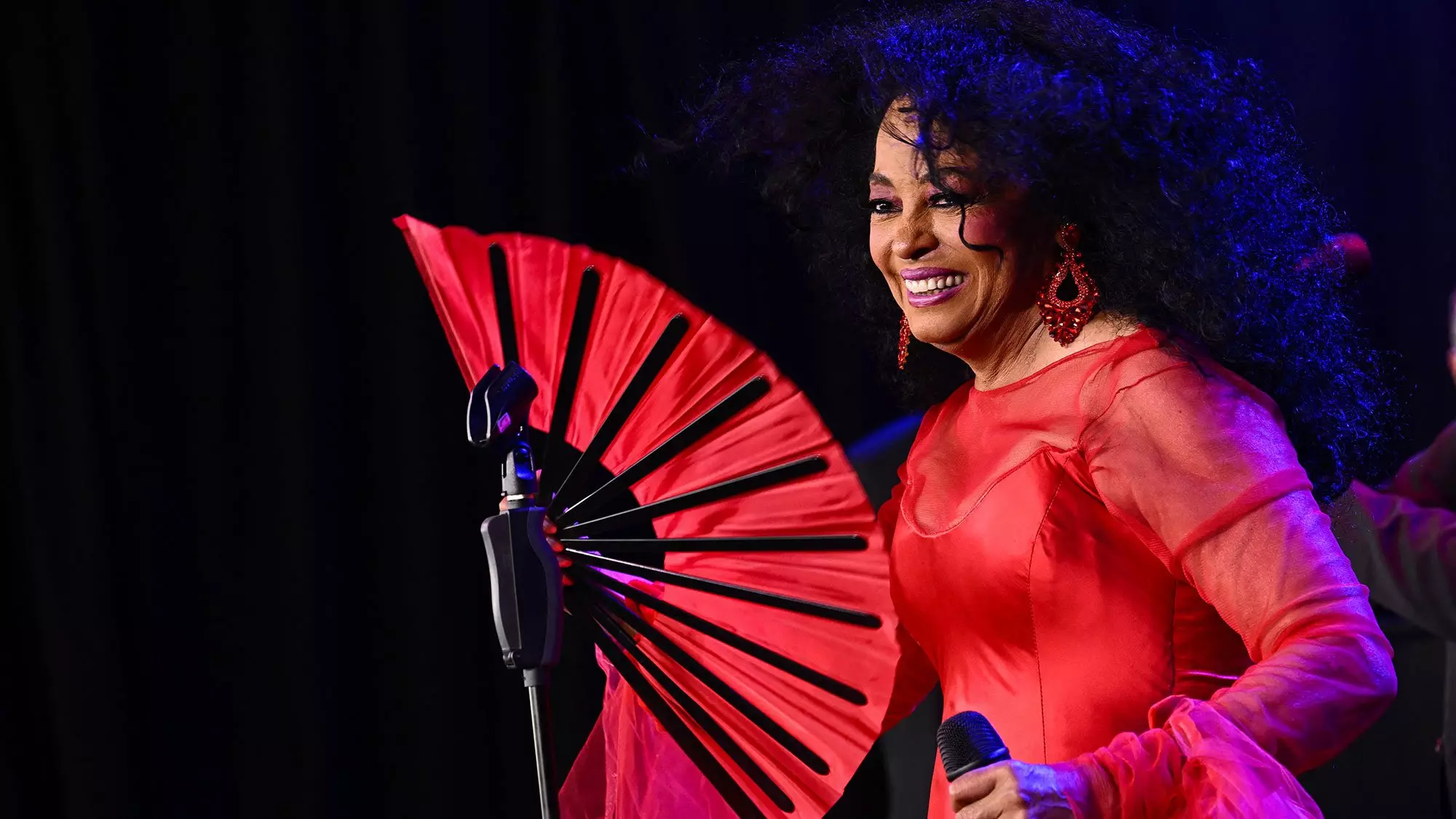
Get Ready For Fool In Love Fest With This Soulful Playlist: Hits & B-Sides From Chaka Khan, Thee Sacred Souls, Smokey Robinson & More

8 Can't-Miss Acts At Afro Nation Detroit 2024: Shenseea, Ayra Starr, Kizz Daniel & More

On This Day In Music: Woodstock '94 Begins In Upstate New York
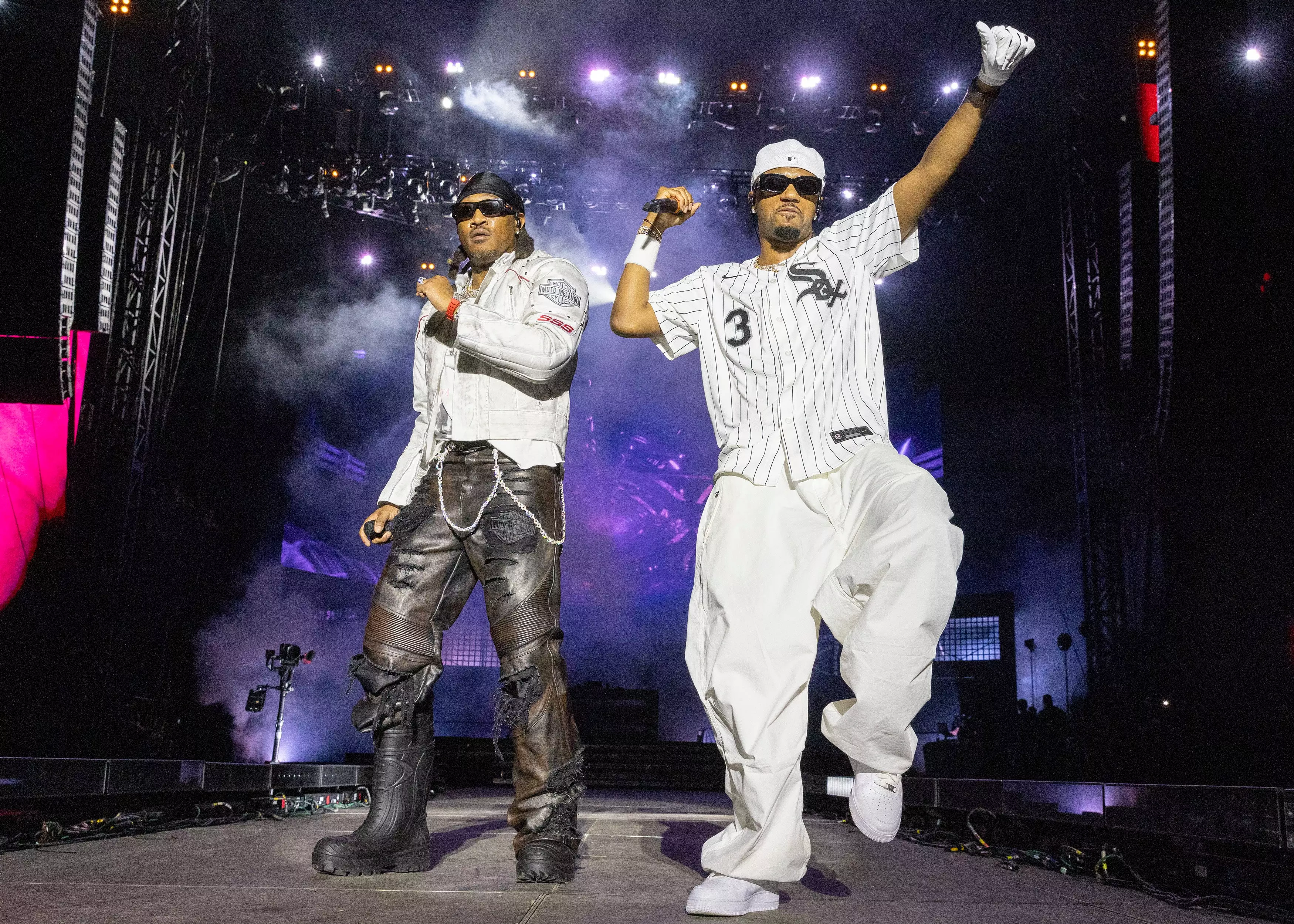
7 Stellar Sets From Lollapalooza 2024: Megan Thee Stallion, Future x Metro Boomin & More
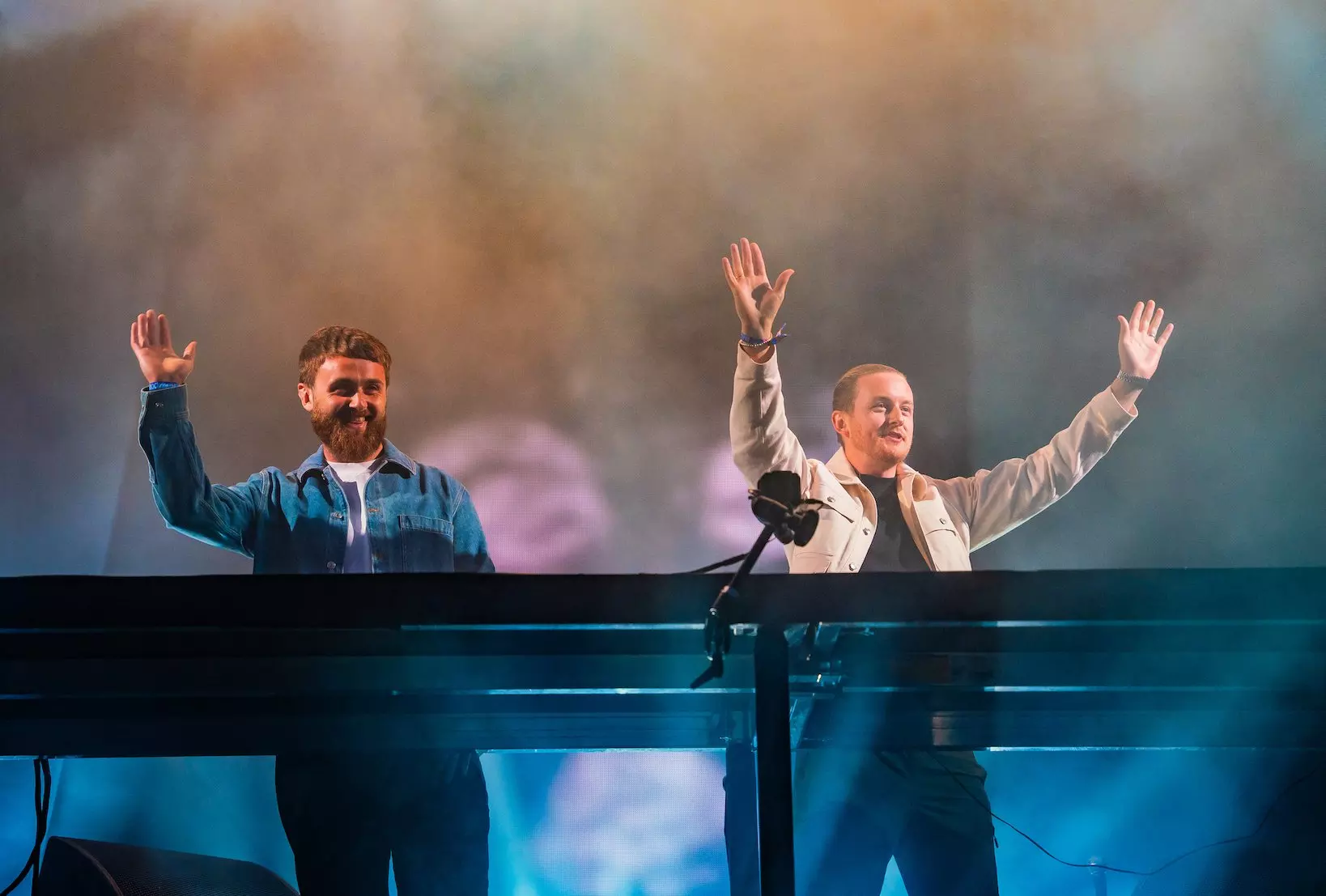
10 Cant-Miss Sets At HARD Summer 2024: Disclosure, Boys Noize, INVT & More
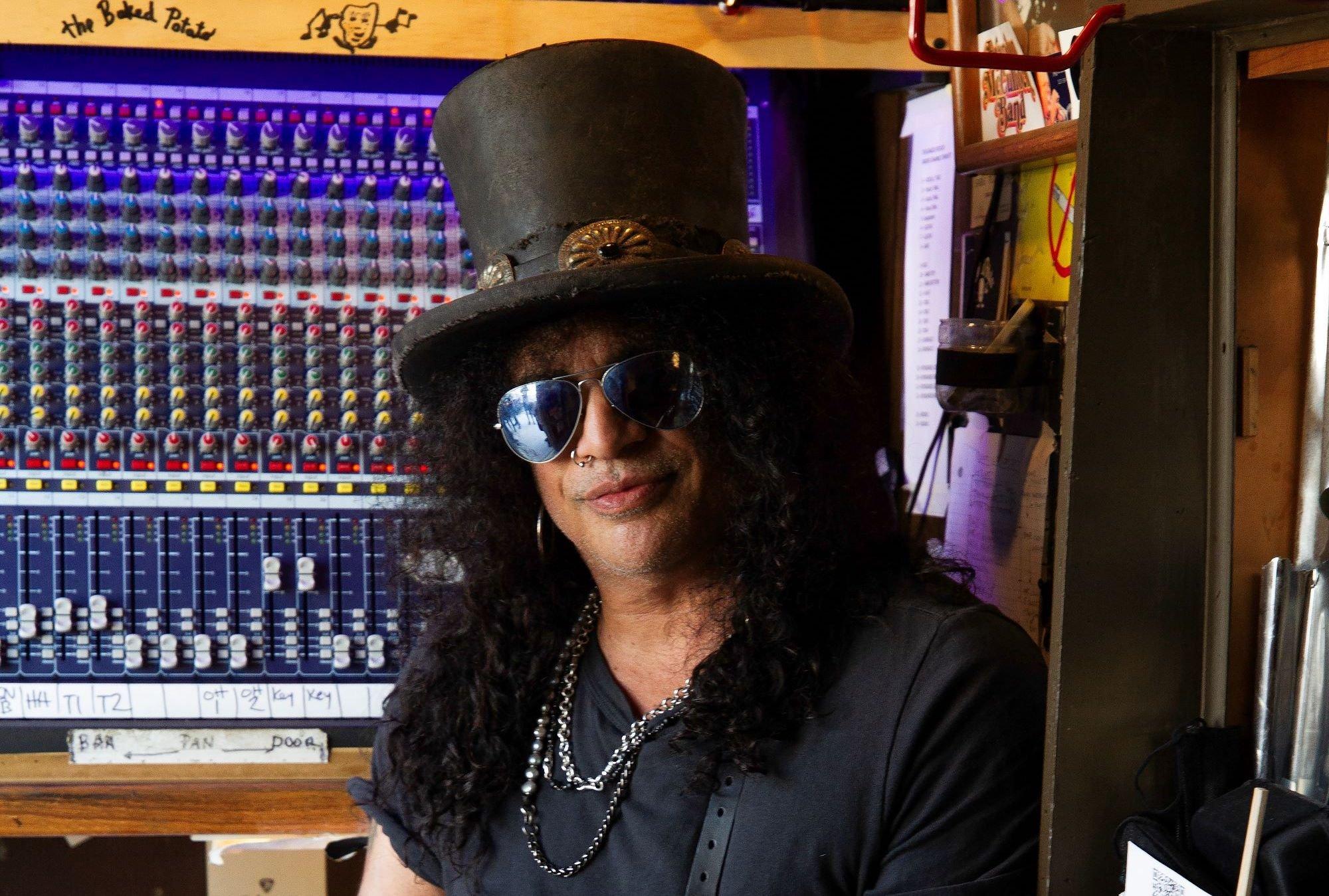
interview
Slash's New Blues Ball: How His Collaborations Album 'Orgy Of The Damned' Came Together
On his new album, 'Orgy Of The Damned,' Slash recruits several friends — from Aerosmith's Steven Tyler to Demi Lovato — to jam on blues classics. The rock legend details how the project was "an accumulation of stuff I've learned over the years."
In the pantheon of rock guitar gods, Slash ranks high on the list of legends. Many fans have passionately discussed his work — but if you ask him how he views his evolution over the last four decades, he doesn't offer a detailed analysis.
"As a person, I live very much in the moment, not too far in the past and not very far in the future either," Slash asserts. "So it's hard for me to really look at everything I'm doing in the bigger scheme of things."
While his latest endeavor — his new studio album, Orgy Of The Damned — may seem different to many who know him as the shredding guitarist in Guns N' Roses, Slash's Snakepit, Velvet Revolver, and his four albums with Myles Kennedy and the Conspirators, it's a prime example of his living-in-the-moment ethos. And, perhaps most importantly to Slash, it goes back to what has always been at the heart of his playing: the blues.
Orgy Of The Damned strips back much of the heavier side of his playing for a 12-track homage to the songs and artists that have long inspired him. And he recruited several of his rock cohorts — the likes of AC/DC's Brian Johnson, Aerosmith's Steven Tyler, Gary Clark Jr., Iggy Pop, Beth Hart, and Dorothy, among others — to jam on vintage blues tunes with him, from "Hoochie Coochie Man" to "Born Under A Bad Sign."
But don't be skeptical of his current venture — there's plenty of fire in these interpretations; they just have a different energy than his harder rocking material. The album also includes one new Slash original, the majestic instrumental "Metal Chestnut," a nice showcase for his tastefully melodic and expressive playing.
The initial seed for the project was planted with the guitarist's late '90s group Slash's Blues Ball, which jammed on genre classics. Those live, spontaneous collaborations appealed to him, so when he had a small open window to get something done recently, he jumped at the chance to finally make a full-on blues album.
Released May 17, Orgy Of The Damned serves as an authentic bridge from his musical roots to his many hard rock endeavors. It also sees a full-circle moment: two Blues Ball bandmates, bassist Johnny Griparic and keyboardist Teddy Andreadis, helped lay down the basic tracks. Further seizing on his blues exploration, Slash will be headlining his own touring blues festival called S.E.R.P.E.N.T. in July and August, with support acts including the Warren Haynes Band, Keb' Mo', ZZ Ward, and Eric Gales.
Part of what has kept Slash's career so intriguing is the diversity he embraces. While many heavy rockers stay in their lane, Slash has always traveled down other roads. And though most of his Orgy Of The Damned guests are more in his world, he's collaborated with the likes of Michael Jackson, Carole King and Ray Charles — further proof that he's one of rock's genre-bending greats.
Below, Slash discusses some of the most memorable collabs from Orgy Of The Damned, as well as from his wide-spanning career.
I was just listening to "Living For The City," which is my favorite track on the album.
Wow, that's awesome. That was the track that I knew was going to be the most left of center for the average person, but that was my favorite song when [Stevie Wonder's 1973 album] Innervisions came out when I was, like, 9 years old. I loved that song. This record's origins go back to a blues band that I put together back in the '90s.
Slash's Blues Ball.
Right. We used to play "Superstition," that Stevie Wonder song. I did not want to record that [for Orgy Of The Damned], but I still wanted to do a Stevie Wonder song. So it gave me the opportunity to do "Living For The City," which is probably the most complicated of all the songs to learn. I thought we did a pretty good job, and Tash [Neal] sang it great. I'm glad you dig it because you're probably the first person that's actually singled that song out.
With the Blues Ball, you performed Hoyt Axton's "The Pusher" and Robert Johnson's "Crossroads," and they surface here. Isn't it amazing it took this long to record a collection like this?
[Blues Ball] was a fun thrown-together thing that we did when I [was in, I] guess you call it, a transitional period. I'd left Guns N' Roses [in 1996], and it was right before I put together a second incarnation of Snakepit.
I'd been doing a lot of jamming with a lot of blues guys. I'd known Teddy [Andreadis] for a while and been jamming with him at The Baked Potato for years prior to this. So during this period, I got together with Ted and Johnny [Griparic], and we started with this Blues Ball thing. We started touring around the country with it, and then even made it to Europe. It was just fun.
Then Snakepit happened, and then Velvet Revolver. These were more or less serious bands that I was involved in. Blues Ball was really just for the fun of it, so it didn't really take precedence. But all these years later, I was on tour with Guns N' Roses, and we had a three-week break or whatever it was. I thought, I want to make that f—ing record now.
It had been stewing in the back of my mind subconsciously. So I called Teddy and Johnny, and I said, Hey, let's go in the studio and just put together a set and go and record it. We got an old set list from 1998, picked some songs from an app, picked some other songs that I've always wanted to do that I haven't gotten a chance to do.
Then I had the idea of getting Tash Neal involved, because this guy is just an amazing singer/guitar player that I had worked with in a blues thing a couple years prior to that. So we had the nucleus of this band.
Then I thought, Let's bring in a bunch of guest singers to do this. I don't want to try to do a traditional blues record, because I think that's going to just sound corny. So I definitely wanted this to be more eclectic than that, and more of, like, Slash's take on these certain songs, as opposed to it being, like, "blues." It was very off-the-cuff and very loose.
It's refreshing to hear Brian Johnson singing in his lower register on "Killing Floor" like he did in the '70s with Geordie, before he got into AC/DC. Were you expecting him to sound like that?
You know, I didn't know what he was gonna sing it like. He was so enthusiastic about doing a Howlin' Wolf cover.
I think he was one of the first calls that I made, and it was really encouraging the way that he reacted to the idea of the song. So I went to a studio in Florida. We'd already recorded all the music, and he just fell into it in that register.
I think he was more or less trying to keep it in the same feel and in the same sort of tone as the original, which was great. I always say this — because it happened for like two seconds, he sang a bit in the upper register — but it definitely sounded like AC/DC doing a cover of Howlin' Wolf. We're not AC/DC, but he felt more comfortable doing it in the register that Howlin' Wolf did. I just thought it sounded really great.
You chose to have Demi Lovato sing "Papa Was A Rolling Stone." Why did you pick her?
We used to do "Papa Was A Rolling Stone" back in Snakepit, actually, and Johnny played bass. We had this guy named Rod Jackson, who was the singer, and he was incredible. He did a great f—ing interpretation of the Temptations singing it.
When it came to doing it for this record, I wanted to have something different, and the idea of having a young girl's voice telling the story of talking to her mom to find out about her infamous late father, just made sense to me. And Demi was the first person that I thought of. She's got such a great, soulful voice, but it's also got a certain kind of youth to it.
When I told her about it, she reacted like Brian did: "Wow, I would love to do that." There's some deeper meaning about the song to her and her personal life or her experience. We went to the studio, and she just belted it out. It was a lot of fun to do it with her, with that kind of zeal.
You collaborate with Chris Stapleton on Fleetwood Mac's "Oh Well" by Peter Green. I'm assuming the original version of that song inspired "Double Talkin' Jive" by GN'R?
It did not, but now that you mention it, because of the classical interlude thing at the end... Is that what you're talking about? I never thought about it.
I mean the overall vibe of the song.
"Oh Well" was a song that I didn't hear until I was about 12 years old. It was on KMET, a local radio station in LA. I didn't even know there was a Fleetwood Mac before Stevie Nicks and Lindsey Buckingham. I always loved that song, and I think it probably had a big influence on me without me even really realizing it. So no, it didn't have a direct influence on "Double Talkin' Jive," but I get it now that you bring it up.
Was there something new that you learned in making this album? Were your collaborators surprised by their own performances?
I think Gary Clark is just this really f—ing wonderful guitar player. When I got "Crossroads," the idea originally was "Crossroads Blues," which is the original Robert Johnson version. And I called Gary and said, "Would you want to play with me on this thing?"
He and I only just met, so I didn't know what his response was going to be. But apparently, he was a big Guns N' Roses fan — I get the idea, anyway. We changed it to the Cream version just because I needed to have something that was a little bit more upbeat. So when we got together and played, we solo-ed it off each other.
When I listen back to it, his playing is just so f—ing smooth, natural, and tasty. There was a lot of that going on throughout the making of the whole record — acclimating to the song and to the feel of it, just in the moment.
I think that's all an accumulation of stuff that I've learned over the years. The record probably would be way different if I did it 20 years ago, so I don't know what that evolution is. But it does exist. The growth thing — God help us if you don't have it.
You've collaborated with a lot of people over the years — Michael Jackson, Carole King, Lemmy, B.B. King, Fergie. Were there any particular moments that were daunting or really challenging? And was there any collaboration that produced something you didn't expect?
All those are a great example of the growth thing, because that's how you really grow as a musician. Learning how to adapt to playing with other people, and playing with people who are better than you — that really helps you blossom as a player.
Playing with Carole King [in 1993] was a really educational experience because she taught me a lot about something that I thought that I did naturally, but she helped me to fine tune it, which was soloing within the context of the song. [It was] really just a couple of words that she said to me during this take that stuck with me. I can't remember exactly what they were, but it was something having to do with making room for the vocal. It was really in passing, but it was important knowledge.
The session that really was the hardest one that I ever did was [when] I was working with Ray Charles before he passed away. I played on his "God Bless America [Again]" record [on 2002's Ray Charles Sings for America], just doing my thing. It was no big deal. But he asked me to play some standards for the biopic on him [2004's Ray], and he thought that I could just sit in with his band playing all these Ray Charles standards.
That was something that they gave me the chord charts for, and it was over my head. It was all these chord changes. I wasn't familiar with the music, and most of it was either a jazz or bebop kind of a thing, and it wasn't my natural feel.
I remember taking the chord charts home, those kinds you get in a f—ing songbook. They're all kinds of versions of chords that wouldn't be the version that you would play.
That was one of those really tough sessions that I really learned when I got in over my head with something. But a lot of the other ones I fall into more naturally because I have a feel for it.
That's how those marriages happen in the first place — you have this common interest of a song, so you just feel comfortable doing it because it's in your wheelhouse, even though it's a different kind of music than what everybody's familiar with you doing. You find that you can play and be yourself in a lot of different styles. Some are a little bit challenging, but it's fun.
Are there any people you'd like to collaborate with? Or any styles of music you'd like to explore?
When you say styles, I don't really have a wish list for that. Things just happen. I was just working with this composer, Bear McCreary. We did a song on this epic record that's basically a soundtrack for this whole graphic novel thing, and the compositions are very intense. He's very particular about feel, and about the way each one of these parts has to be played, and so on. That was a little bit challenging. We're going to go do it live at some point coming up.
There's people that I would love to play with, but it's really not like that. It's just whatever opportunities present themselves. It's not like there's a lot of forethought as to who you get to play with, or seeking people out. Except for when you're doing a record where you have people come in and sing on your record, and you have to call them up and beg and plead — "Will you come and do this?"
But I always say Stevie Wonder. I think everybody would like to play with Stevie Wonder at some point.
Incubus On Revisiting Morning View & Finding Rejuvenation By Looking To The Past

Photo: Jeff Kravitz/FilmMagic
video
GRAMMY Rewind: Kendrick Lamar Honors Hip-Hop's Greats While Accepting Best Rap Album GRAMMY For 'To Pimp a Butterfly' In 2016
Upon winning the GRAMMY for Best Rap Album for 'To Pimp a Butterfly,' Kendrick Lamar thanked those that helped him get to the stage, and the artists that blazed the trail for him.
Updated Friday Oct. 13, 2023 to include info about Kendrick Lamar's most recent GRAMMY wins, as of the 2023 GRAMMYs.
A GRAMMY veteran these days, Kendrick Lamar has won 17 GRAMMYs and has received 47 GRAMMY nominations overall. A sizable chunk of his trophies came from the 58th annual GRAMMY Awards in 2016, when he walked away with five — including his first-ever win in the Best Rap Album category.
This installment of GRAMMY Rewind turns back the clock to 2016, revisiting Lamar's acceptance speech upon winning Best Rap Album for To Pimp A Butterfly. Though Lamar was alone on stage, he made it clear that he wouldn't be at the top of his game without the help of a broad support system.
"First off, all glory to God, that's for sure," he said, kicking off a speech that went on to thank his parents, who he described as his "those who gave me the responsibility of knowing, of accepting the good with the bad."
Looking for more GRAMMYs news? The 2024 GRAMMY nominations are here!
He also extended his love and gratitude to his fiancée, Whitney Alford, and shouted out his Top Dawg Entertainment labelmates. Lamar specifically praised Top Dawg's CEO, Anthony Tiffith, for finding and developing raw talent that might not otherwise get the chance to pursue their musical dreams.
"We'd never forget that: Taking these kids out of the projects, out of Compton, and putting them right here on this stage, to be the best that they can be," Lamar — a Compton native himself — continued, leading into an impassioned conclusion spotlighting some of the cornerstone rap albums that came before To Pimp a Butterfly.
"Hip-hop. Ice Cube. This is for hip-hop," he said. "This is for Snoop Dogg, Doggystyle. This is for Illmatic, this is for Nas. We will live forever. Believe that."
To Pimp a Butterfly singles "Alright" and "These Walls" earned Lamar three more GRAMMYs that night, the former winning Best Rap Performance and Best Rap Song and the latter taking Best Rap/Sung Collaboration (the song features Bilal, Anna Wise and Thundercat). He also won Best Music Video for the remix of Taylor Swift's "Bad Blood."
Lamar has since won Best Rap Album two more times, taking home the golden gramophone in 2018 for his blockbuster LP DAMN., and in 2023 for his bold fifth album, Mr. Morale & the Big Steppers.
Watch Lamar's full acceptance speech above, and check back at GRAMMY.com every Friday for more GRAMMY Rewind episodes.
10 Essential Facts To Know About GRAMMY-Winning Rapper J. Cole
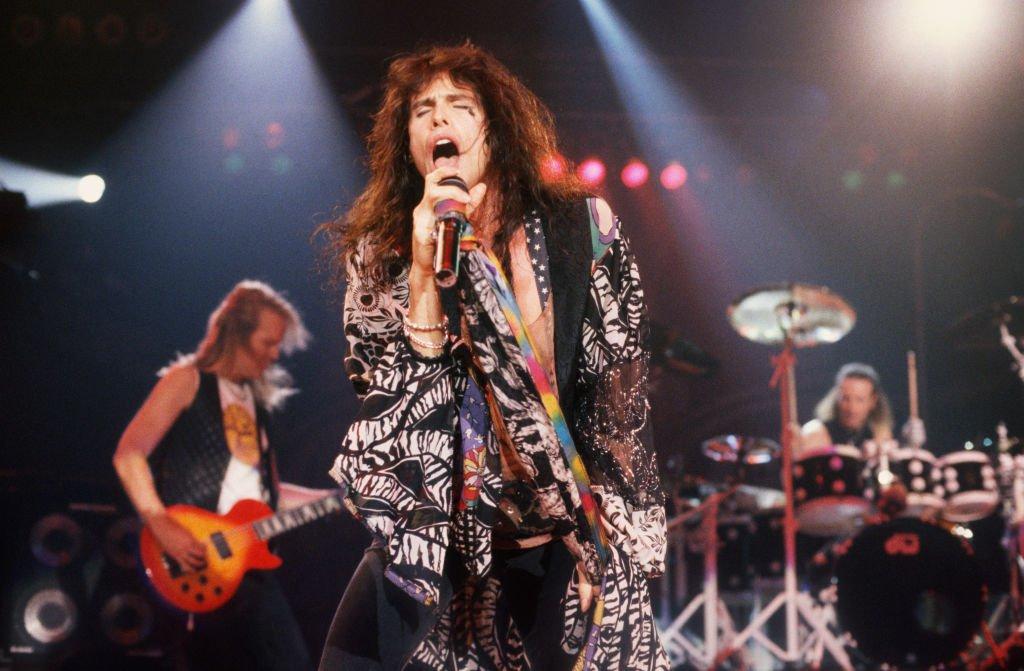
Photo: Gie Knaeps/Getty Images
list
10 Reasons Why 'Get A Grip' Is Aerosmith's Most Iconic Album
In celebration of its 30th anniversary, GRAMMY.com revisits 'Get A Grip' — the album which gave Aerosmith their biggest commercial success nearly 25 years into their rollercoaster career.
Having conquered the 1970s with the seminal stadium rock albums Toys in the Attic and Rocks, Aerosmith appeared to fall apart in the 1980s with a string of disappointing albums and various interpersonal dramas. But by the end of the decade, Run-D.M.C. collaboration "Walk This Way" and pop metal blockbusters Pump and Permanent Vacation had helped the Boston outfit to reclaim their crown as America's biggest band. The big question was whether they could sustain their unexpected second wind into the 1990s?
1993's Get A Grip answered that with a resounding yes. In fact, Aerosmith's 11th studio effort proved to be their commercial zenith, racking up a career-best 20 million sales worldwide, spawning four top 40 singles and winning Best Rock Performance By A Duo Or Group With Vocal GRAMMY Award for two consecutive years.
To celebrate its 30th anniversary, here are 10 ways Steven Tyler, guitarists Joe Perry and Brad Whitford, bassist Tom Hamilton and drummer Joey Kramer managed to build on their down-and-dirty legacy through Get A Grip.
It Recognized The Band's Unique Selling Point
In the four years since Aerosmith's previous album, the playful excesses of the hair metal scene had given way to the grunge movement's super-serious quest for authenticity. While the likes of Mötley Crue and Skid Row unwisely tried to beat Nirvana and Pearl Jam at their own game, Tyler and co. recognized that there was still an audience for pure rock 'n' roll.
Indeed, Get A Grip entirely ignores everything else that was dominating the charts of 1993 and instead plays confidently to the band's strengths. The lyrics here are optimistic and often mischievous (see "I'd rather be OD'ing on the crack of her ass" on drug recovery tale "Fever"), and the maximalist production is designed to raise the roof. If rock fans needed a party record in 1993, there was only one candidate.
It Foreshadowed The Country Crossover
From Bon Jovi and Shawn Michaels to Darius Rucker and Aaron Lewis, it sometimes appears as though every rocker of the late 20th century has pivoted into country music at some point or other. But seven years after they proved that guitars and hip-hop needn't be mutually exclusive, Aerosmith once again led the way with yet another crossover.
The harmonica solos and twangy guitar riffs of "Cryin'" and "Crazy" sound tailor made for the Grand Ole Opry — the former was actually co-penned by Nashville native Taylor Rhodes. Tyler would later score a No. 1 on the Top Country Albums chart with his 2016 solo debut, We're All Somebody from Somewhere.
It Cemented Their Status As MTV Icons
Aerosmith became MTV favorites in the '80s thanks to eye-catching videos for "Dude Looks Like A Lady" and "Love In An Elevator." But would they still be as welcome in the '90s now that each member was well into their mid-40s? In a stroke of genius, the band acknowledged that they might need some younger faces to help sell their bombastic hard rock. Step forward the future star of seminal teen flick Clueless.
A 16-year-old Alicia Silverstone appeared in three of Get A Grip's promos, first testing the limits of virtual reality in "Amazing," going on to play a bungee-jumping spurned lover in "Cryin'" and then teaming up with Tyler's daughter Liv in the Thelma and Louise-esque "Crazy." The concept paid dividends for all involved – Silverstone and the younger Tyler became instant pop culture icons, and Aerosmith continued to dominate MTV, even picking up Video of the Year at the network's annual VMAs.
It Proved They Had A Social Conscience
You usually know what you're getting lyrically from an Aerosmith track – they haven't earned a reputation as the masters of sleaze rock for nothing. But while Get A Grip still has plenty of sex, drugs (surprisingly of the anti-kind) and rock tales, it also showcased a more socially-conscious side to the former hellraisers.
Inspired by the 1992 Los Angeles uprising following the death of Rodney King,, GRAMMY-winning first single "Livin' on the Edge" finds Tyler tackling everything from racism to religion as he pontificates over the state of the world. Admittedly, lines like "If Chicken Little tells you that the sky is falling/Even if it wasn't, would you still come crawling" weren’t exactly the height of insightful lyricism. But it reminded listeners the group could provide some substance to their hard-partying style.
It Made Digital History
While much has been made of David Bowie's pioneering use of the internet, he wasn't the only rock titan to embrace the online world early on. In 1994, Aerosmith once again proved that they could keep up with the times when they released the first digital download song by a major artist.
Although "Head First" didn't appear on Get A Grip, it was recorded for the album and was first issued as a B-side to second single "Eat the Rich." Ten thousand CompuServe subscribers downloaded the four-megabyte WAV file within its first few days. With the world wide web still in infancy, it no doubt took a similar time frame to wait for its completion.
It Elevated Their Power Ballad Credentials
Aerosmith weren't exactly strangers to the power ballad when they released two of the early '90s' finest examples. Later sampled by Eminem, 1973's "Dream On" is considered by some to be the rock genre's first ever. And predecessors Permanent Vacation ("Angel") and Pump ("What It Takes") both spawned hits tailor-made for belting out in front of a mirror with hairbrush.
But the double whammy of "Crazy" and "Cryin'" took the band's ability to pull at the heartstrings to another level. The former, of course, was also their first epic slowie to win a GRAMMY. And no doubt that Diane Warren was taking note; the GRAMMY winner later penned Aerosmith's only No. 1, Armageddon's suitably blockbuster love song "I Don't Want To Miss A Thing."
It's Precision Tooled For Success
Having previously experienced life in the rock wilderness, Aerosmith left nothing to chance for their first album in four years. Indeed, the majority of Get A Grip's 14 tracks feature a helping hand from a seasoned songwriter, from Jim Vallance (Bryan Adams) on the satirical "Eat the Rich" to Desmond Child (Bon Jovi) on the carnal rock of "Flesh" and Mark Hudson (Cher) on the funky "Gotta Love It."
That's perhaps why the record spawned no fewer than seven singles, four of which made the top 40 ("Livin' on the Edge," "Cryin'," "Crazy," "Amazing") and why, with the exception of closing instrumental "Boogie Man" and brief "Walk This Way"-referencing "Intro," every other track was worthy of a release.
Some Aerosmith purists may have balked at all the outside interference, but despite their blatant hit-chasing approach the band never lost sight of who they are.
It Boasts Rock Royalty
As well as recruiting a who's who of professional songwriters to boost Get A Grip's hit-making potential, Aerosmith also invited two bona fide rock legends to give the record even more pizzazz. Listen closely to the backing vocals on the autobiographical stadium rock of "Amazing" and you'll hear the raspy tones of fellow '70s survivor Don Henley.
Meanwhile, the ultra-cool Lenny Kravitz – then very much at his commercial peak – went one better. Not only did he lend his voice to the full-throttle blues-rock of "Line Up," he also helped Tyler and Perry write it. The "Are You Gonna Go My Way" singer later went on to support Aerosmith on their mid- '00s tour, Rockin' The Joint.
It Contains Joe Perry's Best Lead Vocal
With one of the most charismatic frontmen in rock history at their disposal, Aerosmith have wisely only allowed Perry to take center stage on a handful of occasions. The guitarist first grabbed the mic for himself on "Bright Light Fright," a track from 1977's Draw the Line but had to wait until Get A Grip to take the lead once again.
Also penned solely by Perry, "Walk on Down" is the kind of driving back-to-basics rock that once saw the group hailed as the USA's answer to the Rolling Stones. But the vocals are far easier on the ear than whenever Keith Richards takes over from Mick Jagger.
It Features The Group's Most Striking Cover
Aerosmith could never be accused of playing it safe with their cover art. Who can forget Nine Lives' controversial depiction of Lord Krishna throwing some shapes on the snake demon Kaliya's head? Or the slightly nightmarish caricatures of Draw the Line? But Get A Grip's close-up of a cow's pierced udder undoubtedly remains the band's most striking.
Designed by metal favorite Hugh Syme (Iron Maiden's The X Factor, Def Leppard's Retro Active), the image divided audiences at the time, with music journalist Steven Hyden blasting it as the worst album cover ever, while various animal rights groups also took umbrage, too. According to the group, however, the offending image was entirely computer generated.
How 'The Harder They Come' Brought Reggae To The World: A Song By Song Soundtrack Breakdown
